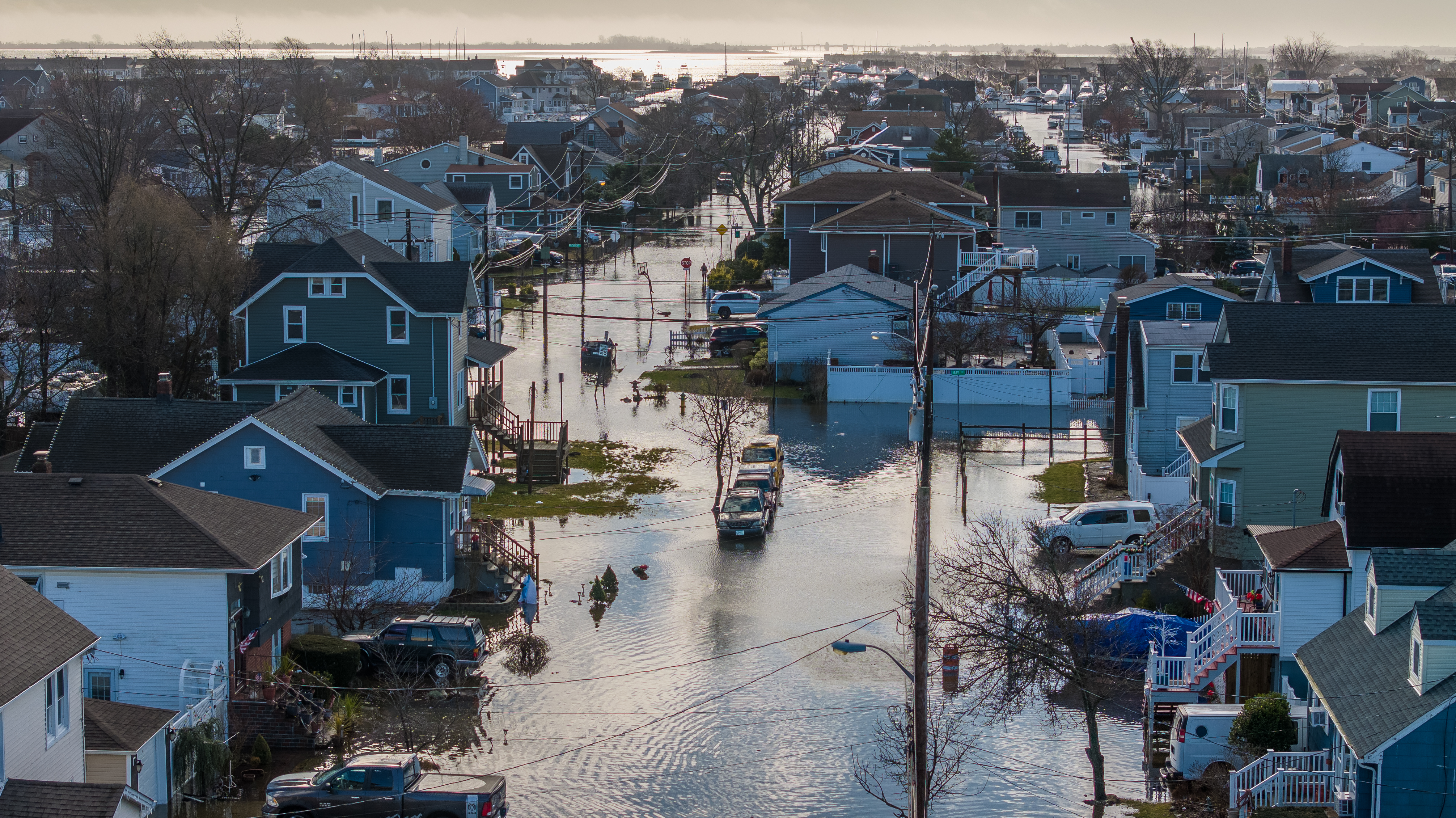
Sinking ground and rising sea levels will put more than half a million people at risk of repeated flooding across 32 U.S. coastal cities — including New York, Boston, San Francisco and Miami — new research shows.
If nothing is done to mitigate this risk, the deluges could cause $107 billion in damages by 2050.
Around 30% of the U.S. population lives in cities along the coast, where sea levels are expected to rise up to 1 foot (0.3 meters) by 2050. But while previous flooding forecasts have taken this upsurge into account, they do not factor in the alarming rate at which many U.S. cities are sinking. Now, a new study, published March 5 in the journal Nature, has modelled the double-blow of rising sea levels and sinking land.
"The omission of subsidence in previous flood estimates can largely be attributed to its gradual nature, which often escapes immediate notice," Leonard Ohenhen, a geophysicist at Virginia Tech in Blacksburg, told Live Science in an email. "The findings of our research, though anticipated to some degree given the existing knowledge on subsidence, were nonetheless striking."
Since the 20th century, climate change has been melting glaciers and heating ocean water, which makes the water expand, causing sea levels to rise at about 0.13 inch (3.4 millimeters) per year in the last three decades.
Related: East Coast cities are sinking at a shocking rate, NASA images show
Yet at the same time, the land in coastal areas is also sinking due to a perfect storm of factors: metropolises are growing taller and heavier; coastal land is shifting downward after the end of the last ice age; and gas, water and other materials have been lifted en masse from below ground, hollowing out the land beneath cities
Thanks to all of this, coastal cities have begun sinking by as much as 0.2 inch (5 mm) a year, tripling the changes to relative sea levels around affected areas.
To get a better understanding of the threat posed by relative sea level rises, the researchers fed precise, radar-obtained data charting subsidence around 32 U.S. cities across the Atlantic, Pacific and Gulf coasts into flood hazard models, which then mapped out the areas most at risk.
By overlaying the flood map with population data from the 2010 U.S. Census, the scientists producd some rough estimates of the human and economic costs caused by future flooding.
If no preventative steps are taken, they found that 1 in 50 people, living in 280,000 properties along U.S. coasts, will be affected. A disproportionate share of the damages will also be shouldered by minority and low-income groups.
To avoid this, the U.S. will need to limit the extraction of natural gas and groundwater to prevent additional subsidence, as well as strengthening coastal defenses.
"It is clear that significant investment in both structural defenses and subsidence management strategies will be essential." Ohenhen said. "The economic implications of such investments must be weighed against the potential costs of inaction, which could result in far greater economic and social impacts."
And subsidence isn't just a problem for the U.S.. Sinking land due to groundwater extraction is expected to affect 19% of the world's population by 2040, and humans have even pumped enough water to change Earth's tilt. In Indonesia, the government has announced it will move its capital from Jakarta (home to 11 million people) to Borneo after the mega-city sank more than 8 feet (2.5 m) in the last decade.







